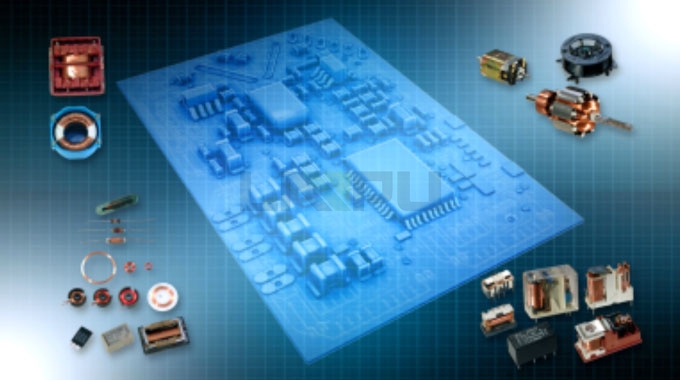Enameled wire, also known as magnet wire or winding wire, is the crucial "blood vessel" powering all electric motors, transformers, and inductors. It perfectly balances the dual responsibilities of conductivity and insulation. The history of its insulating materials is a compelling miniature narrative of how electrical equipment transitioned from being bulky and inefficient to lightweight and high-performing. Understanding the historical development of enameled wire is key to appreciating modern electrical technology.
 1. The Dawn of Electricity: The Bulky "Fiber Era"
1. The Dawn of Electricity: The Bulky "Fiber Era"Before modern chemical insulating varnishes emerged, winding insulation relied mainly on natural fibers.
In this period, windings had to be massive to achieve sufficient insulating strength. This resulted in motors and transformers that were generally oversized and operated with low efficiency, severely restricting the practical applications of electrical technology.
2. The Chemical Leap: The Birth of Modern Enameled WireWith the expansion of the chemical industry, engineers began the pivotal step of coating conductors with synthetic resins, marking the true birth of enameled wire.
Early Attempts: Oil and Alkyd Resins
In the early 20th century, the first insulating varnishes used were based on oil-based clear coats or alkyd resins. They were revolutionary because they first achieved a "thin film" insulation layer. This dramatically improved the coil’s fill factor (the proportion of copper conductor in the winding), allowing for significantly smaller motors. However, these early enameled wires still suffered from inadequate mechanical strength and heat resistance, often sustaining damage during the winding process.

Acetal Enameled Wire (Formal/Formvar)
The introduction of acetal resin enameled wire in the mid-20th century was a major turning point. Acetal wire offered a host of superior features:
Higher Mechanical Strength: Better resilience against the friction and stretching that occur during winding.
Excellent Solvent Resistance: Enhanced the reliability of the subsequent varnish impregnation process.
Due to its robust and balanced performance, acetal enameled wire rapidly displaced earlier products, becoming the preferred choice for general-purpose motors and transformers. This change propelled the boom in household appliances and industrial motors.
3. The High-Performance Era: Driving Extreme ConditionsAs industrialization accelerated, equipment operating temperatures rose sharply, making single-property insulating varnishes obsolete. Enameled wire development shifted decisively towards polymer composite materials.
Polyester (PE)
Polyester varnish provided an excellent balance of cost-effectiveness and electrical performance, making it the most widely adopted material for medium- and low-voltage equipment that required mid-level heat resistance.
The Thermal Revolution: Polyimide and Composites
To meet the demands for higher heat resistance (H-class, 180℃ and above), engineers developed high-performance resins:
Polyimide (PI): Offers exceptionally high thermal stability and superior electrical properties, crucial for aerospace and high-performance motors.
Polyamide-imide (PAI): Often applied as a topcoat over a polyester primer (forming polyesterimide). This composite structure dramatically boosts the wire's thermal shock and chemical resistance.
This period of material innovation was fundamental to achieving the high power density and ultra-miniaturization seen in modern electrical machinery.
4. Contemporary Innovations: New Energy and Digital ChallengesIn the 21st century, the evolution of enameled wire is closely tied to new energy vehicles (NEVs), industrial variable frequency drives, and high-frequency power supplies.
Battling Electrical Stress: Corona-Resistant Wire
Electric vehicles and modern industrial automation rely on inverters (variable frequency drives) to control motors. The high-frequency pulse voltage generated by these inverters subjects traditional enameled wire to partial discharge (or corona) corrosion, leading to premature insulation failure. New corona-resistant enameled wire is engineered with thicker insulation or specialized composite layers to withstand these damaging high-frequency voltage surges, making it a critical technology for NEV motor windings.
Maximizing Efficiency: Flat Wire Technology
To further maximize the motor winding's fill factor and heat dissipation—essential for boosting the efficiency and power of electric vehicle drive motors—flat wire (enameled wire with a rectangular cross-section) technology has surged in popularity. Flat wire windings are now an indispensable component in high-performance electric vehicle motor design.
From its humble beginnings as cotton yarn to today’s high-tech polyimide composite film, every advancement in enameled wire has directly addressed the needs of the electrical industry. It is more than a simple conductor; it is the cornerstone ensuring the stable and efficient operation of modern power systems. As we continue to explore applications like superconducting, high-frequency, and extreme environments, innovation in enameled wire materials and processes will undoubtedly remain at the forefront.

